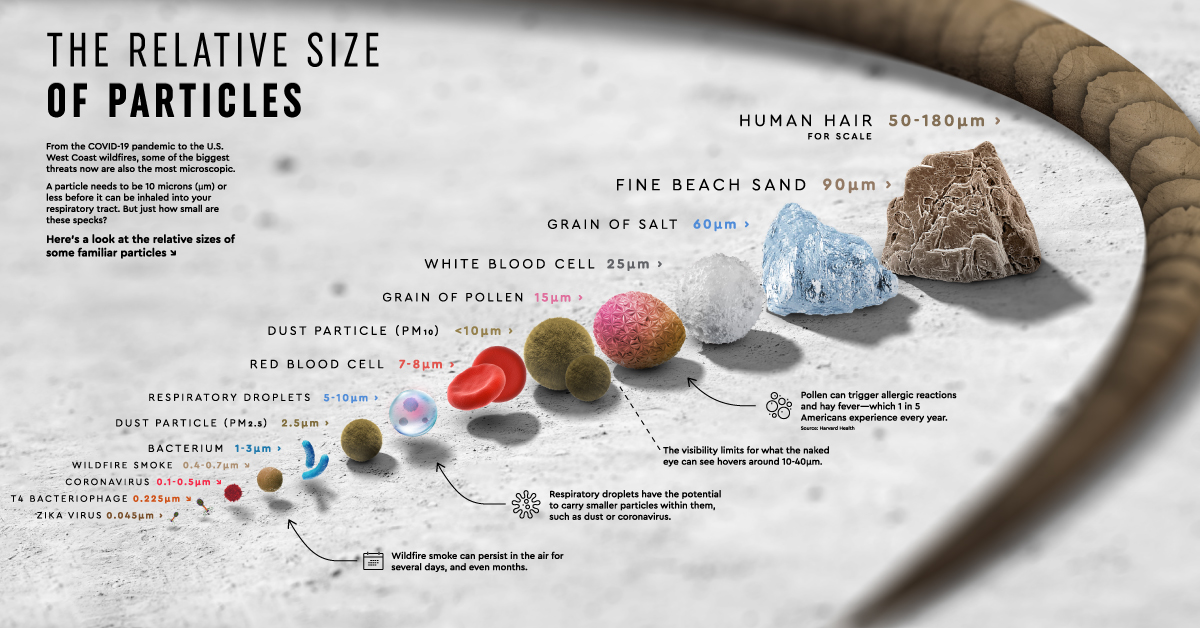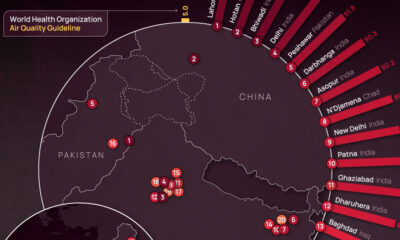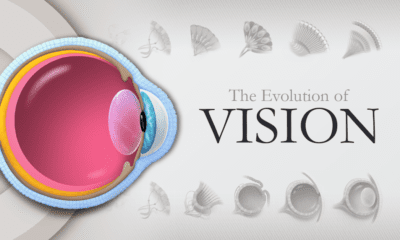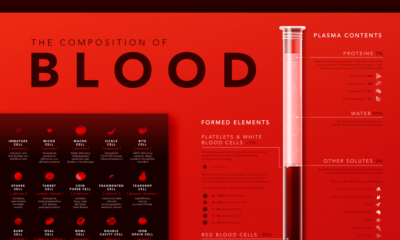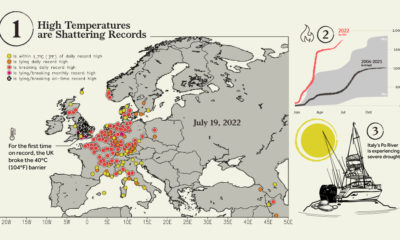Science
Zooming In: Visualizing the Relative Size of Particles
View the full-size version of this infographic.
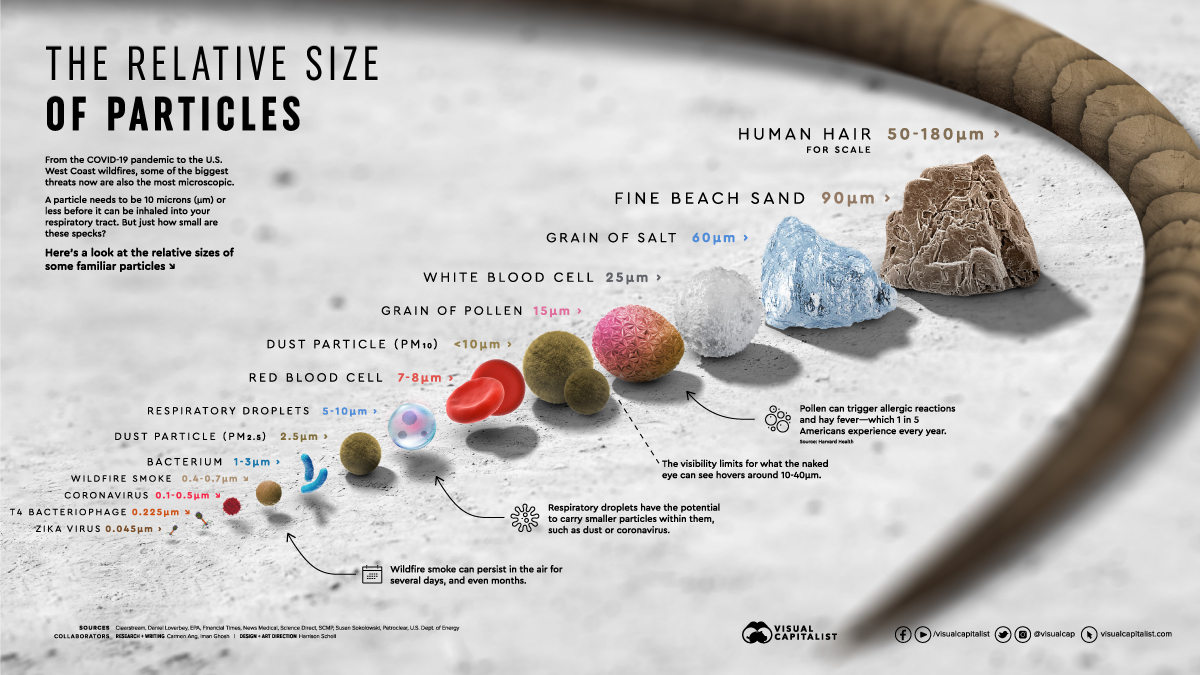
Zooming In: Visualizing the Relative Size of Particles
View the full-size version of this infographic.
Lately, the world’s biggest threats have been microscopic in size.
From the global COVID-19 pandemic to wildfires ripping through the U.S. West Coast, it seems as though our lungs can’t catch a break, or more aptly, a breath.
But just how small are the particles we’re currently battling? And how does their size compare to other tiny molecules?
Specks Too Small to See
While the coronavirus that causes COVID-19 is relatively small in size, it isn’t the smallest virus particle out there.
Both the Zika virus and the T4 Bacteriophage—responsible for E. coli—are just a fraction of the size, although they have not nearly claimed as many lives as COVID-19 to date.
Coronavirus particles are smaller than both red or white blood cells, however, a single blood cell is still virtually invisible to the naked eye. For scale, we’ve also added in a single human hair as a benchmark on the upper end of the size range.
| Particles | Average Size (microns, μm) |
|---|---|
| Zika virus | 45nm |
| T4 Bacteriophage | 225nm |
| Coronavirus COVID-19 (SARS-CoV-2) | 0.1-0.5μm |
| Bacterium | 1-3μm |
| Light dust particle | 1μm |
| Dust particle: PM2.5 | ≤2.5μm |
| Respiratory droplets containing COVID-19 | 5-10μm |
| Red blood cell | 7-8μm |
| Dust particle: PM10 | ≤10μm |
| Pollen grain | 15μm |
| White blood cell | 25μm |
| Visibility threshold (Limit of what the naked eye can see) | 10-40μm |
| Grain of salt | 60μm |
| Fine beach sand | 90μm |
| Human hair | 50-180μm |
On the other end of the spectrum, pollen, salt, and sand are significantly larger than viruses or bacteria. Because of their higher relative sizes, our body is usually able to block them out—a particle needs to be smaller than 10 microns before it can be inhaled into your respiratory tract.
Because of this, pollen or sand typically get trapped in the nose and throat before they enter our lungs. The smaller particles particles, however, are able to slip through more easily.
Smoky Skies: Air Pollution and Wildfires
While the virus causing COVID-19 is certainly the most topical particle right now, it’s not the only speck that poses a health risk. Air pollution is one of the leading causes of death worldwide—it’s actually deadlier than smoking, malaria, or AIDS.
One major source of air pollution is particulate matter, which can contain dust, dirt, soot, and smoke particles. Averaging around 2.5 microns, these particles can often enter human lungs.
At just a fraction of the size between 0.4-0.7 microns, wildfire smoke poses even more of a health hazard. Research has also linked wildfire exposures to not just respiratory issues, but also cardiovascular and neurological issues.
Here’s an animated map by Flowing Data, showing how things heated up in peak wildfire season between August-September 2020:
What’s the main takeaway from all this?
There are many different kinds of specks that are smaller than the eye can see, and it’s worth knowing how they can impact human health.
Misc
Infographic: Investment Opportunities in Biotech
Capture the investment opportunities in biotech with the MSCI Life Sciences Indexes, which target areas like virology and oncology.

Infographic: Investment Opportunities in Biotech
With the world evolving at an unprecedented pace, nearly every sector is being disrupted in some way or another.
In transportation, EVs were spearheaded by Tesla, which emerged as the first new American automaker in decades, and is now one of the world’s most valuable companies. Similarly, in the realm of AI, OpenAI has taken a leading position in large language models, demonstrating the immense potential of the technology.
Now, we turn our attention to biotech, an industry that is developing innovative treatments at an accelerated pace. In this graphic from sponsor MSCI, we explain the growing pipeline of biotech treatments, and why this could benefit investors.
Growth in Clinical Drug Trials
A clinical drug trial is a study performed on people to evaluate the effectiveness of a medical intervention. Since 2000, the number of trials initiated annually has grown by over 1,300%.
| Drug Trial Type | 2000 | 2010 | 2020 | 2022 |
|---|---|---|---|---|
| Monoclonal antibody | 60 | 623 | 1,833 | 1,685 |
| Protein & peptide therapeutics | 172 | 1,058 | 1,771 | 1,567 |
| Vaccine | 80 | 594 | 1,259 | 915 |
| Recombinant antibody | 50 | 513 | 984 | 860 |
| Cell therapy | 56 | 277 | 548 | 502 |
| Gene-Modified Cell Therapy | 16 | 148 | 355 | 423 |
| DNA & RNA therapeutics | 7 | 56 | 475 | 346 |
| Other biotechnology product | 28 | 236 | 362 | 347 |
| Total | 469 | 3,505 | 7,587 | 6,645 |
Behind every new treatment is an innovative company working to develop it. Thus, as the number of clinical trials grows, so too does the size of the investment universe.
Unfortunately, identifying suitable companies for investment is rather difficult. While a disease may have thousands of potential medicines, only one may ultimately receive FDA approval. This approval process can also take over a decade because treatments must pass several phases of testing.
Introducing the MSCI Life Sciences Indexes
To capture investment opportunities in biotech, MSCI has released a suite of thematic indexes that focus on key growth categories such as oncology and virology.
Developed in collaboration with Royalty Pharma, the world’s largest buyer of pharmaceutical royalties, the MSCI Life Sciences Indexes are designed to gauge the performance of pioneering companies within the biotech space.
These unique indexes can be used to benchmark growth, facilitate portfolio construction, and enhance investment research.

Explore the MSCI Life Sciences Indexes now

-

 Politics18 hours ago
Politics18 hours agoHow Do Chinese Citizens Feel About Other Countries?
What is the Chinese public’s view of world powers? This visual breaks down Chinese sentiment towards other countries.
-

 Maps7 days ago
Maps7 days agoMapped: The Safest Cities in the U.S.
How safe is small town America? This map reveals the safest cities in the U.S. in terms of the total crime rate per every 1,000 residents.
-

 Countries7 days ago
Countries7 days agoMapped: World’s Top 40 Largest Military Budgets
War in Europe has caused Ukraine’s military spend to jump up by 640%. How do the world’s largest military budgets compare?
-
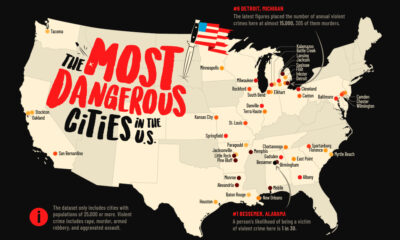
 United States1 week ago
United States1 week agoMapped: The Most Dangerous Cities in the U.S.
This map shows the most dangerous cities in the U.S. in terms of the violent crime rate per 1,000 residents.
-

 History2 weeks ago
History2 weeks agoVintage Viz: The World’s Rivers and Lakes, Organized Neatly
Rivers and lakes have played important roles throughout history. This Vintage Viz looks at these bodies of water from the viewpoint of 1850.
-

 Business1 month ago
Business1 month agoVisualizing Annual Working Hours in OECD Countries
Where do people work the most? Explore our analysis of the average annual working hours across OECD countries.
-

 Stocks4 weeks ago
Stocks4 weeks agoVisualizing BlackRock’s Top Equity Holdings
-

 Technology2 weeks ago
Technology2 weeks agoMeet the Competing Apps Battling for Twitter’s Market Share
-

 Politics18 hours ago
Politics18 hours agoHow Do Chinese Citizens Feel About Other Countries?
-

 Markets4 weeks ago
Markets4 weeks agoVisualizing Every Company on the S&P 500 Index
-

 Economy2 weeks ago
Economy2 weeks agoVisualizing 1 Billion Square Feet of Empty Office Space
-
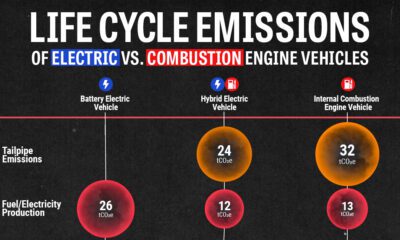
 Energy4 weeks ago
Energy4 weeks agoLife Cycle Emissions: EVs vs. Combustion Engine Vehicles
-

 History2 weeks ago
History2 weeks agoVintage Viz: The World’s Rivers and Lakes, Organized Neatly
-
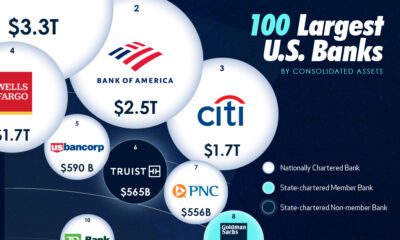
 United States3 weeks ago
United States3 weeks agoVisualized: The 100 Largest U.S. Banks by Consolidated Assets




